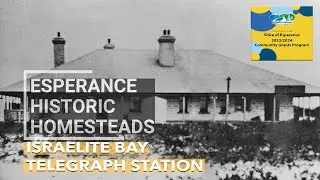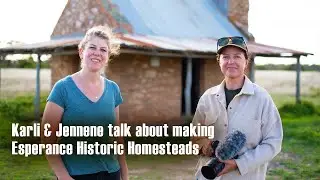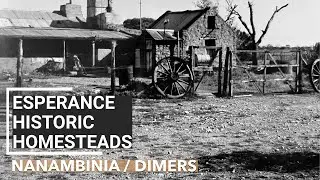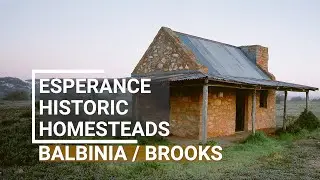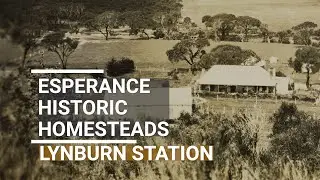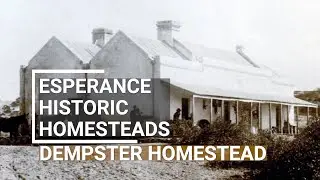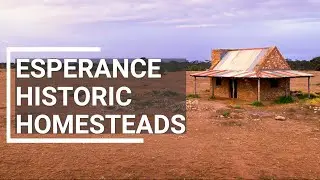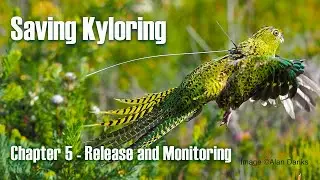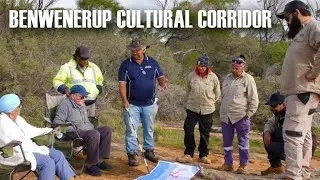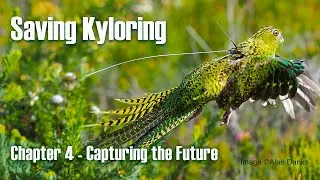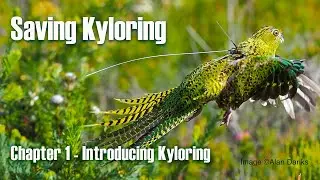Lynburn Station - Ep 2
This second episode of Esperance Historic Homesteads tells of the wonderful Lynburn Station. Built in 1872, by Campbell Taylor, Lynburn Homestead is the second oldest building still remaining in the Esperance region. Lynburn Station is located on land that has been home to the Wudjari Nyungar people for many thousands of years. The Thomas River, which flows past the homestead, is a significant cultural corridor for the Wudjari people as they historically travelled along it from the coast to further inland.
Campbell Taylor applied for a lease of land around the Thomas River in 1870 and moved a flock of sheep to his new landholdings the following year. His was the first pastoral station to the east of Esperance. In 1872, he began to build a homestead on the site.
The homestead building was constructed from locally quarried stone, with a mud mortar. The walls were almost 2 feet thick. The roof beams were made from local yate timber, and the roof was originally made of thatched river rushes. The homestead was extended over time to include a kitchen, sitting room, four bedrooms, a cellar, and a verandah. They also built a large stone reservoir for water, and a channel to collect the water, which is still in place today.
In 1874, a large shearing shed was built near the homestead, from river stones. Lynburn Homestead was built with the assistance and labour of the local Indigenous people.
In 1877, Campbell’s father Patrick died, and he inherited Candyup. This led to a lot of travel between Thomas River and Albany, a distance of more than 500 kilometres. Of course, he was travelling on horseback, through uncleared land with no roads – an exhausting journey he would have had to undertake many times.
In 1883, Campbell married Charlotte Gresham, a governess from Melbourne. She was an accomplished painter who had trained as an artist at the National Gallery of Victoria.
Eventually, managing both properties proved to be too much, and in 1887 Campbell decided to try and sell Lynburn. He advertised the property for sale in the newspapers without any success.
As the gold rush started in Coolgardie, many of the stockmen and shepherds that pastoralists like Campbell relied on went to seek their fortune in the goldfields. This changed the way they ran their properties. Without stockmen, Campbell had to borrow money to put up fences around his property. The debt he incurred as a result of this decision would later cause problems.
In 1900, tragedy struck…
Campbell and Charlotte set out for Esperance to cast their votes in the Federation referendum, held on July 31st, 1900. They were travelling with a young Aboriginal man, probably one of the workers on the station. Along the journey, the cart hit a stump and overturned. While Charlotte and the young man travelling with them were thrown clear, the cart fell on Campbell, injuring him severely.
Campbell was carried to the coast on a stretcher, a distance of about 3 miles, where he was picked up in a boat and transported to Esperance. His injuries were very serious, so Campbell was put on a steamship for Albany. Sadly, he died 2 weeks later.
After Campbell’s death, Charlotte inherited the station and managed it herself for a time, but due to declining wool production, Lynburn was not making much return, and so Charlotte advertised the station for sale in October 1900.
The station did not sell, and in 1901, the bank foreclosed on the loan Campbell had taken out earlier. Charlotte went back to Melbourne where she made a living as a writer and painter.
In 1902, Lynburn Station was purchased by Sir James Lee Steere for £2,900. The property was managed by Lee Steere’s daughter and son-in-law Marian and Alex Turnbull. One of the couple’s children, Alexander Phipps Turnbull, enlisted in the army in 1914, and served in the 10th Light Horse Regiment in the First World War. Tragically, he was killed in Gallipoli in 1915. His family, completely devastated by his death, left Lynburn soon after, leaving much of their furniture and linen behind.
After the Turnbull family left Lynburn, the station changed ownership several times. It was then taken up by Louis and Dorothy Chopin, along with Walter Dimer, in 1932. Dorothy was the granddaughter of Stephen Ponton, one of the early European settlers in the area.
The Chopins moved to Lynburn with their four children - Amanda, Billie, Neale, and Ross. They lived there until 1938, when they moved into Esperance. Walter and Sydney Dimer, two of Henry Dimer’s sons, purchased the station in 1948. They farmed the land but did not live in the homestead.
Over the years, the buildings were unused, and fell into disrepair.
In 1958, Geoff and Pauline Grewar purchased Lynburn Station from the Dimers. They renovated the buildings, saving both the homestead and the shearing shed from collapsing. The thatch roof, which had been destroyed in a fire, was replaced by tin. Lynburn is now owned by Stephen and Michelle Fowler, farmers from Condingup.








